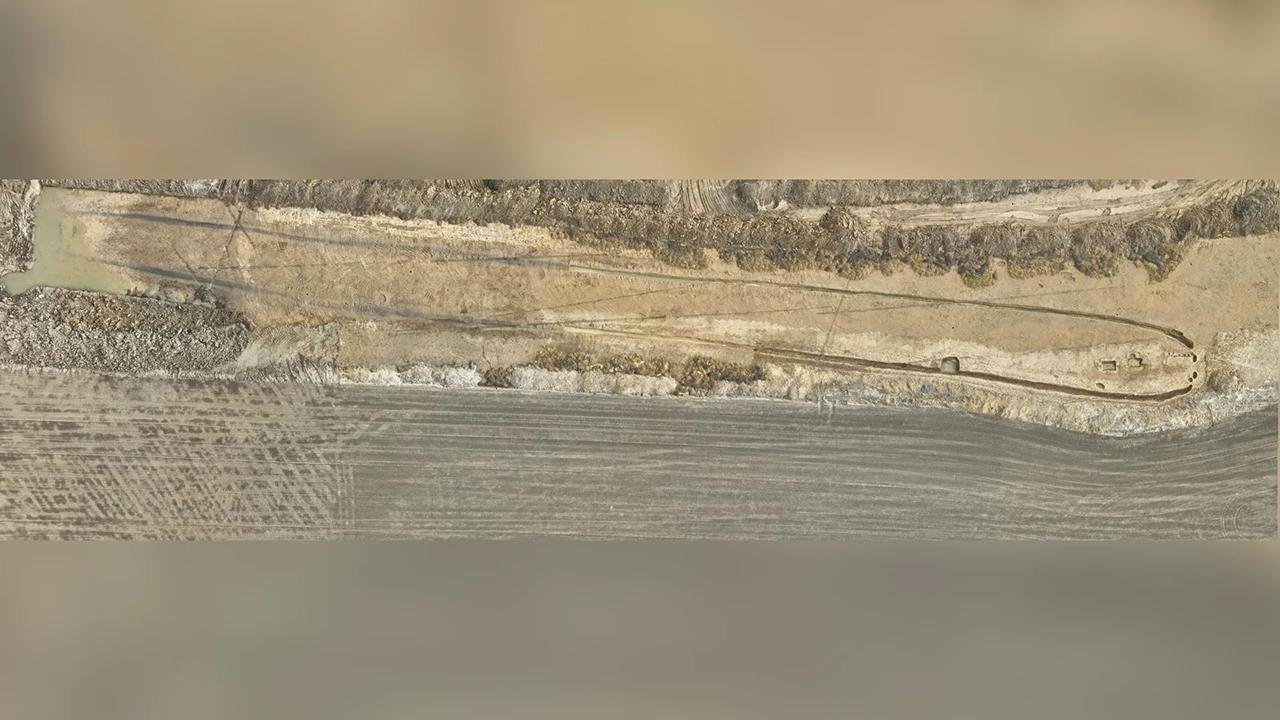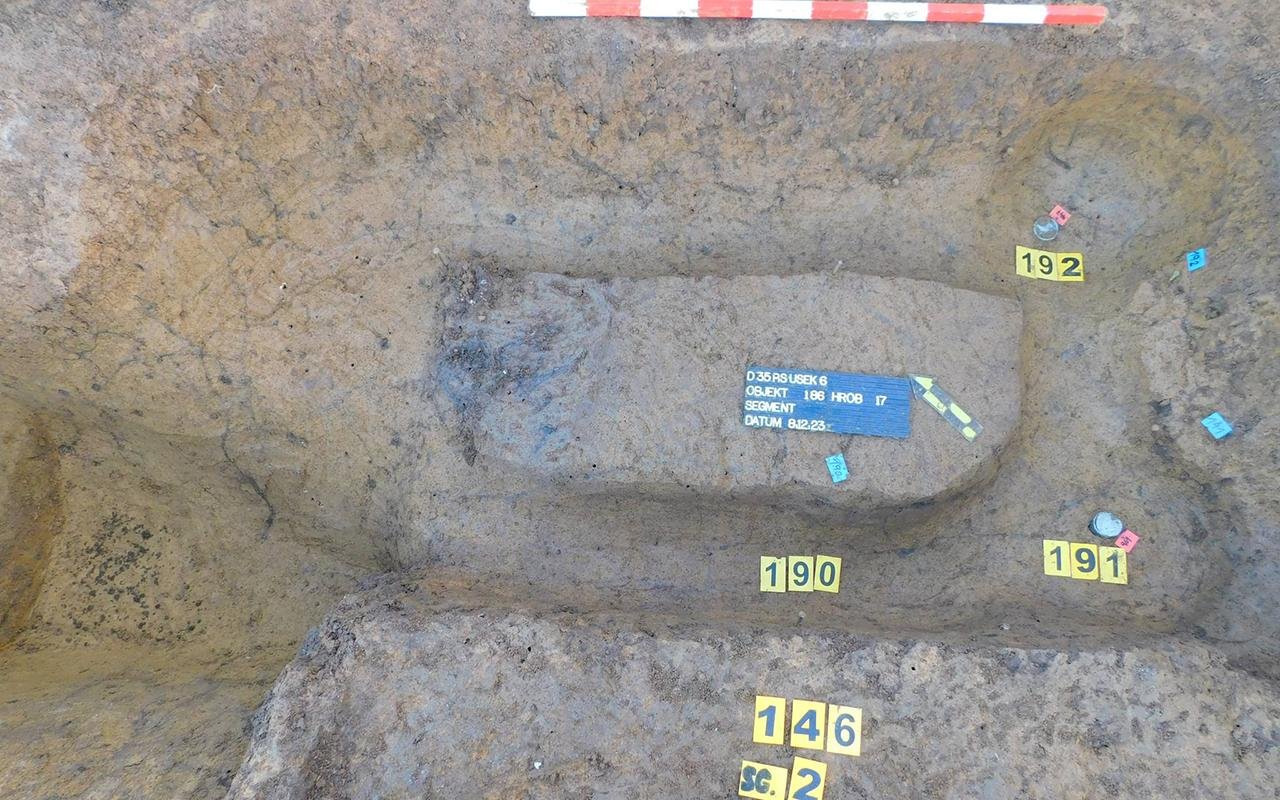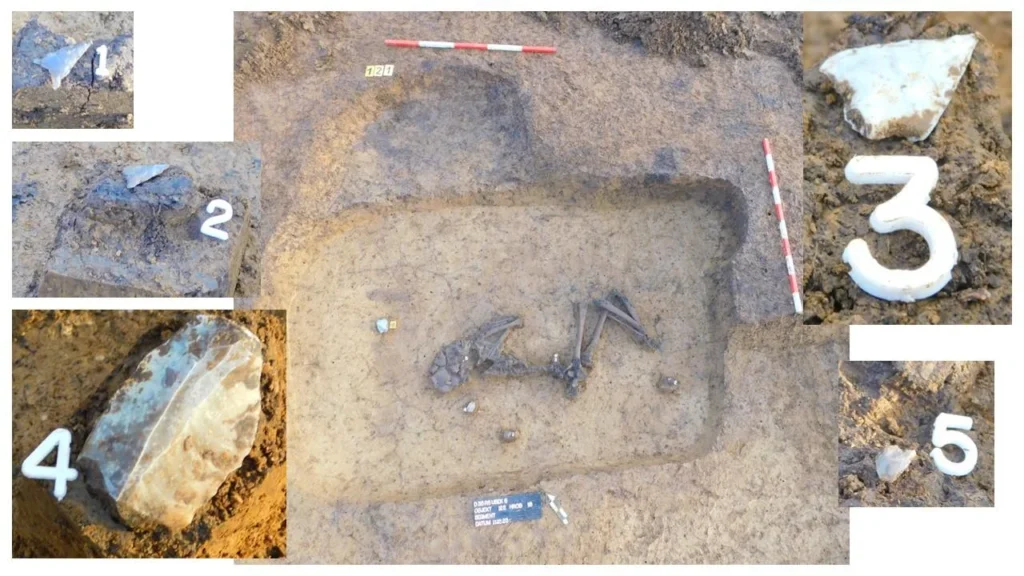During a recent highway construction project in Czechia, archaeologists have discovered one of the largest prehistoric burial mounds in Europe. A general view of the long barrow was shared by the Department of Archaeology at the University of Hradec Králové. This significant find occurred between the villages of Dlouhé Dvory and Lípa, northeast of Prague, along the planned route of a new motorway near Dohalice. The discovery was announced in a Facebook post by the Department of Archaeology.

The initial indication of this site was an “elongated trapezoidal gutter,” a characteristic feature of long barrows—ancient burial mounds from the Eneolithic period, particularly linked to the Funnel-Beaker culture, dating from 3800 to 3350 BCE. Further excavations uncovered the full size of the mound, which is an impressive structure measuring around 620 feet (about 190 meters) in length and 50 feet (15 meters) at its widest. This positions it among the longest prehistoric mounds in Central Europe.

An aerial view of the site illustrates the mound’s massive oval shape, which, despite its age, remains a remarkable archaeological discovery. Unfortunately, much of the above-ground structure has been eroded away, likely due to agricultural practices over countless years. Nonetheless, the remaining parts have yielded a wealth of information.
Archaeologists found two central burials believed to be those of the individuals for whom the mound was originally erected, along with 28 additional burials. The graves and mound are estimated to be at least 5,300 years old. “These burial mounds were constructed as monumental funerary sites containing graves, referred to as central burials, which we assume belong to the individuals for whom the mound was built,” explained the archaeologists in their statement. Laboratory analyses will soon provide more accurate dating for these burials.

The central burials revealed fascinating details. The first grave featured an internal pit design with gutters along its longer sides and post holes at each corner. A ceramic vessel was discovered as a grave offering, with the body laid on its left side facing north. In contrast, the second central burial lacked an internal structure and also had the body placed on its left side.
In addition to human remains, several artifacts were uncovered during the excavation. One grave contained pottery fragments, while another held four flint arrowheads and a flint blade. These items were likely offerings and align with grave inventories found at similar archaeological sites in Czechia and Poland.
This ancient burial complex is associated with the Funnel-Beaker culture, a prehistoric society recognized for its distinctive pottery and burial customs.

